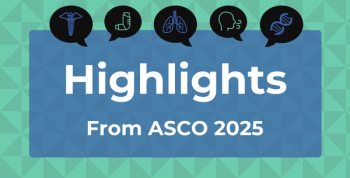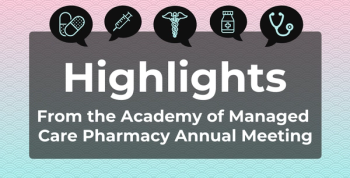
Biology's Big Solutions Will Start by Thinking Small
Did you think biology only involved studying people, animals, and plants? How about tumors, or maybe cells? Keep going. Smaller. A lot smaller.
Did you think biology only involved studying people, animals, and plants? How about tumors, or maybe cells? Keep going. Smaller. A lot smaller.
Biology, it turns out, is a nanoscience, according to James R. Baker, MD, the Ruth Dow Doan professor and director of the Michigan Nanotechnology Institute for Medicine and Biological Sciences at the University of Michigan. Baker offered Monday’s keynote at the 2014 Annual Meeting of the American Academy of Allergy, Asthma & Immunology in San Diego, California.
His talk, “Nanotechnology Applications in Immunology and Allergy,” offered a glimpse of what could be made possible as science gains a better understanding of the tiniest of structures—which Baker said actually run our bodies and what goes on inside them.
“All the structures that make our cells and our bodies work are in the ‘nano’ range,” Baker said. Understanding these structures, especially how they can pass through blood vessels, can potentially solve many of the issues in treating allergies and asthma. The more we understand a virus, the more we will grasp the principles of the very tiny. Our immune system, Baker said, evolved to recognize viruses, and it will be a grasp of this recognition factor that will be key to “nano” applications.
Think of the properties of the circulatory system: We know that vessels hold in the blood, yet tiny particles pass through them. “This will be important in the way we deliver drugs. The blood vessels are designed to hold the blood in the vessel, but they are also porous to deliver nutrition,” Baker said. The particles for delivery, in the form of therapy, will have to be made in the 15 nanometer range, he said.
The engineering essentially involves the same principles that created artificial heart valves; the difference will be the size. “We need to make materials that are the same size as our biologicial parts,” said Baker.
Applying the lessons of nanotechnology would aid the field in 3 major ways; harnessing small structures has potential in: (1) delivering the antigen to the immune system; (2) in activating innate immunity to induce specific immune responses; and (3) in the suppression of immune responses. As with therapies today, some “nano” structures will work alone and some will work in combination.
The principles are especially important to allergists because so many tiny triggers are nanoparticles themselves, passing through the skin, the air we breathe, and getting into corners of the body by passing through the smallest of pores. Multiple examples exist of pollutants harming workers in factories where no potential risk was previously known or even suspected; it was after exposure that the risk emerged.
Nanotechnology principles are already involved in the making of medicines on the market today, Baker said. But there is potential for the harnessing of tiny structures to crack the problem of a vaccine for respiratory syncytial virus, or RSV, which is especially dangerous for children, highly contagious, and easily spread when an infected person coughs or sneezes. Unlike the major childhood diseases that were tamed by vaccines in the last century, RSV has thus far proved elusive. Baker called it “the last great target for vaccination we haven’t been able to achieve.”
Newsletter
Stay ahead of policy, cost, and value—subscribe to AJMC for expert insights at the intersection of clinical care and health economics.







































